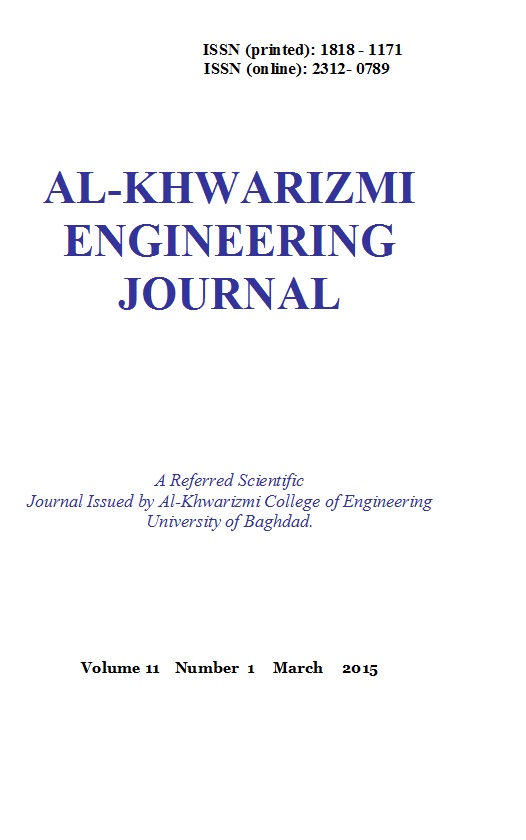Energy Saving of Heat Gain by Using Buried Pipe Inside a Roof
Keywords:
Water pipe, Roof heat gain, Solar-air temperature.Abstract
Abstract
This work deals with a numerical investigation to evaluate the utilization of a water pipe buried inside a roof to reduce the heat gain and minimize the transmission of heat energy inside the conditioning space in summer season. The numerical results of this paper showed that the reduction in heat gain and energy saving could be occurred with specific values of parameters, like the number of pipes per square meter, the ratio of pipe diameter to the roof thickness, and the pipe inlet water temperature. Comparing with a normal roof (without pipes), the results indicated a significant reduction in energy heat gain which is about 37.8% when the number of pipes per meter of roof length is 3.0 , the ratio of pipe diameter to the wall thickness (D/W) is 0.20, and the water inlet temperature is 30°C, while the minimum ratio of reduction 24% is achieved when the number of pipes per meter, the ratio of pipe diameter to the wall thickness, and the water inlet temperature are 27, 30 and 33 °C, respectively. The results also showed that there is a very small effect of pipe centre position inside the wall on the final heat transmission.
Keyword: Water pipe, Roof heat gain, Solar-air temperature.
Downloads
Published
Issue
Section
License
Copyright: Open Access authors retain the copyrights of their papers, and all open access articles are distributed under the terms of the Creative Commons Attribution License, which permits unrestricted use, distribution, and reproduction in any medium, provided that the original work is properly cited. The use of general descriptive names, trade names, trademarks, and so forth in this publication, even if not specifically identified, does not imply that these names are not protected by the relevant laws and regulations. While the advice and information in this journal are believed to be true and accurate on the date of its going to press, neither the authors, the editors, nor the publisher can accept any legal responsibility for any errors or omissions that may be made. The publisher makes no warranty, express or implied, with respect to the material contained herein.












